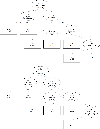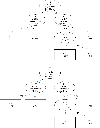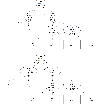Regression tree applications to studying alcohol-related problems among college students
- PMID: 38695808
- PMCID: PMC11827497
- DOI: 10.1037/pha0000718
Regression tree applications to studying alcohol-related problems among college students
Abstract
Machine learning algorithms hold promise for developing precision medicine approaches to addiction treatment yet have been used sparingly to identify predictors of alcohol-related problems. Recursive partitioning, a machine learning algorithm, can identify salient predictors and clinical cut points that can guide treatment. This study aimed to identify predictors and cut points of alcohol-related problems and to examine result stability in two separate, large data sets of college student drinkers (n = 5,090 and 2,808). Four regression trees were grown using the "rpart" package in R. Seventy-one predictors were classified as demographics (e.g., age), alcohol use indicators (e.g., typical quantity/frequency), or psychosocial indicators (e.g., anxiety). Predictors and cut points were extracted and used to manually recreate the tree in the other data set to test result stability. Outcome variables were alcohol-related problems as measured by the Alcohol Use Disorder Identification Test and Brief Young Adult Alcohol Consequences Questionnaire. Coping with depression, conformity motives, binge drinking frequency, typical/heaviest quantity, drunk frequency, serious harm reduction protective behavioral strategies, substance use, and psychosis symptoms best predicted alcohol-related problems across the four trees; coping with depression (cut point range: 1.83-2.17) and binge drinking frequency (cut point range: 1.5-2.5) were the most common splitting variables. Model fit indices suggest relatively stable results accounting for 17%-30% of the variance. Results suggest the nine salient predictors, particularly coping with depression motives scores around 2 and binge drinking frequency around two to three times per month, are important targets to consider when treating alcohol-related problems for college students. (PsycInfo Database Record (c) 2024 APA, all rights reserved).
Figures




References
MeSH terms
Grants and funding
LinkOut - more resources
Full Text Sources

